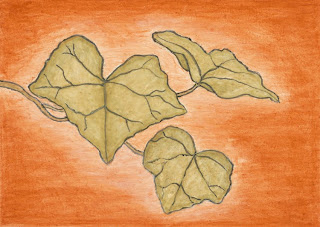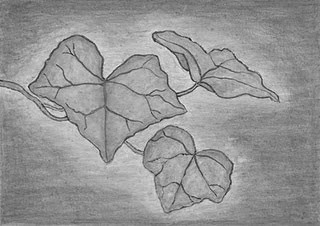I'm retrying the limited palette color wheel with a smaller size and a different black. Soon after beginning last night's wheel I knew I'd taken on more area than needed so now it's a scaled down version. The black, Roman Black, didn't seem to behave as the German Vine Black for my watercolor Zorn palette wheel a few weeks back.
This is the black from last night's wheel (description from Natural Pigments) :
Roman Black, black iron oxide. A natural black earth that is a dense, opaque, heavy color that is absolutely permanent. It is comparatively neutral in undertone, wets easily, and is non-greasy, when compared to carbon blacks. It is a useful pigment when these qualities are required.
And this is tonight's black (description from Natural Pigments) :
Rublev Colours German Vine Black is obtained from the calcination of grape vine shoots, which results in pure carbon with quantities of potassium and sodium salts. The pigment has a bluish black hue and tints made with white have a bluish tinge. Vine black does not have the tinting strength of lampblack, but it has excellent lightfastness.
We can see from the descriptions that Katharine's comment on last night's post nailed the color differences perfectly. The German Vine Black was from a tube of watercolor recently mixed. Remember Val's comment that watercolor paints can be used for mixing egg tempera paint? Thank you both for your wonderful comments!
Looking back, I think I was overly cautious with last night's black, especially when I didn't see it bringing me to greens or violets (like the Zorn watercolor wheel). There was no mixing going on, mostly an overlay of yellow or red onto black. I don't think there was much black over yellow or red.
Here is a start. German Vine Black. Beyond simply laying down linear strokes that seem to bring on some furriness, crosshatching was applied. This wheel will be completed with overlaid strokes. Once this wheel is completed, another with color mixing will be built for comparison.

Can you see all those little white spots? Yup, pin holes. Notice the lower right corner of the image. Koo Schadler mentions in her book that sometimes pinholes can be filled by a bit of light rubbing with a wet finger. I did not achieve good results as rubbing took me right down to the support. More attempts to come with images as well.
So you can see that we're balancing a few simultaneous subjects--ground, pigment, and technique. A bit of research, a bit of work, it will all come together in time.


















































